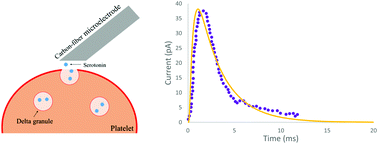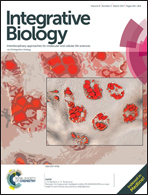A finite-element model of granular serotonin exocytosis
Abstract
Signaling molecules stored in cellular granules serve a broad range of functional purposes. Serotonin, for example, is involved in the regulation of behavior, cognitive function, and hemostasis. Understanding serotonin release from platelet granules can provide valuable fundamental information about the exocytotic process and help elucidate potential abnormalities of diseased platelets. Experimentally, carbon-fiber microelectrochemistry has been utilized to characterize the dynamic behavior of serotonin secretion from individual platelets. The objectives of this study were (1) to develop a finite-element model of the carbon-fiber microelectrode experiment and (2) to predict the effect of the postulated core–halo granule microstructure and rate of fusion pore expansion on the resulting amperometric signal. The model confirmed that the core–halo microstructure is consistent with the observed amperometric spike profiles. Further, it showed that the ratio of pore diameter to granule diameter, rather than the rate of pore expansion, dictates the profile shape. Understanding the driving forces for chemical messenger delivery from platelet granules has implications for understanding abnormalities in diseased platelets as well as other exocytotic cells.

- This article is part of the themed collection: Celebrating our 2018 prize and award winners


 Please wait while we load your content...
Please wait while we load your content...